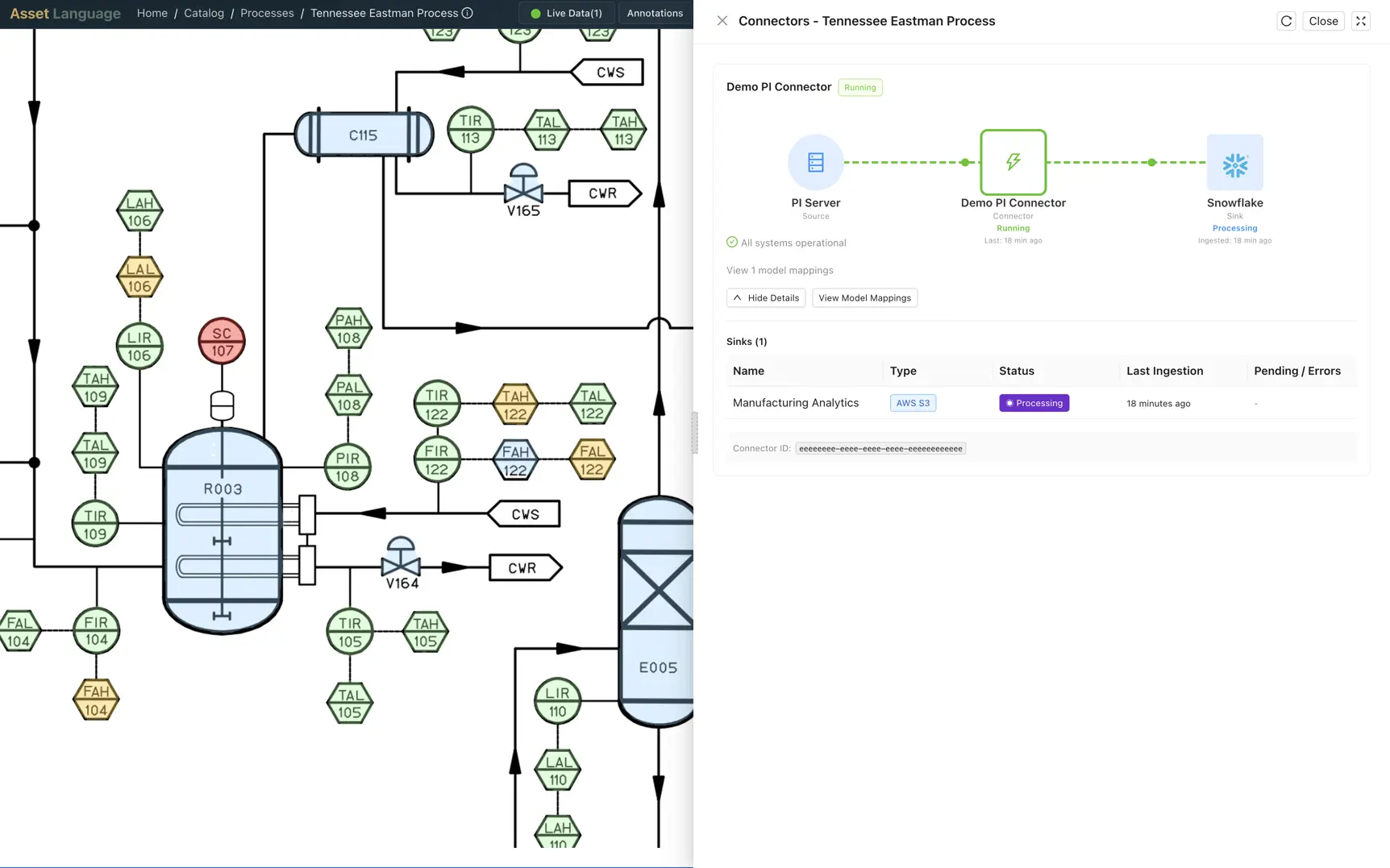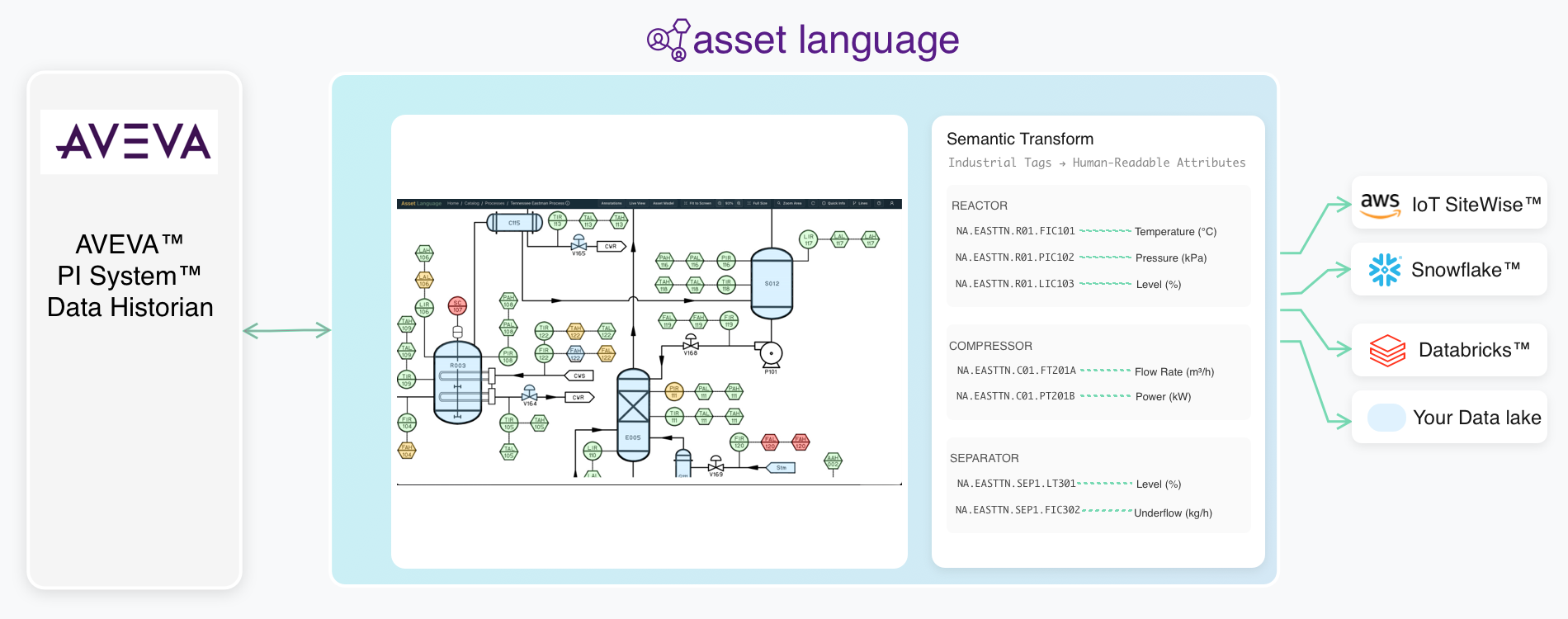Turn manufacturing design into analytics-ready data
-
Query in Business Language: Eliminate weeks of tag decoding. Use business language like
reactor.temperatureinstead of cryptic sensor tags. -
Stream to the Cloud: Deliver clean, business-ready data feeds directly to Snowflake, Databricks, and AWS IoT SiteWise.
-
Maintain Governance: Version control for P&IDs and tags keeps your data infrastructure synchronized with plant floor reality.

